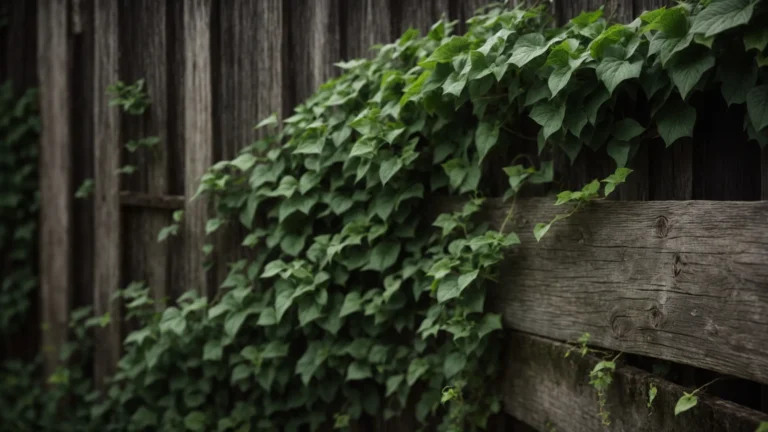So there you are, trying to enjoy your morning coffee in peace, and your neighbor decides now’s the perfect time to have a loud phone conversation three feet from your patio. Sound familiar? You’re not alone in South Gate – most homeowners crave backyard privacy but live in terror of those dreaded HOA violation notices. Professional fence installation in South Gate, MD can help you reclaim your outdoor space without making enemies of your homeowners association.
Here’s the thing: you can absolutely get the privacy you want without turning your HOA into your worst nightmare. You just need to know how to play the game.
What Your HOA Really Cares About (And What They Don’t)
Let me break this down for you – HOAs typically obsess over three main things when it comes to fencing and privacy features. First up is height restrictions, which usually cap out at six feet for most residential fences. Then there’s material requirements, because some associations have banned certain materials outright (sorry, chain link fans). Finally, they’re all about aesthetic guidelines that supposedly help your fence “complement the neighborhood character.”
Here’s what most people don’t realize: your HOA cares way more about how something looks than how it actually functions. They want your backyard to photograph well for the neighborhood website, not necessarily work perfectly for your lifestyle. Keep this in mind as we explore your options.
The golden rule? Always ask permission rather than beg for forgiveness later. Trust me on this one – I’ve seen too many homeowners forced to tear down expensive privacy installations because they didn’t check first.
Fencing Strategies That Keep Everyone Happy
When you’re working within HOA constraints, smart fence design becomes an art form. Start by using that maximum allowed height effectively – if they’ll let you build six feet, build the full six feet. You’d be amazed how much privacy that extra foot or two can provide.
Here’s where things get interesting: lattice toppers. Many HOAs don’t count decorative lattice toward your height limit, which means you can potentially add another 12-18 inches of screening without technically breaking the rules. Just make sure you frame this as “decorative enhancement” when you submit your plans.
Material choice makes a huge difference in HOA approval rates. Vinyl fencing gets the thumbs up from most associations because it looks clean and requires zero maintenance. You can find vinyl privacy panels that block sight lines completely while still looking upscale enough to satisfy the most particular HOA board member.
Composite materials work similarly well – they give you that modern, low-maintenance appeal that HOAs love to brag about in their newsletters. Wood fencing can absolutely work too, especially cedar or quality pressure-treated lumber, but you’ll need to commit to keeping it stained and looking fresh.
Sometimes the best privacy fence doesn’t look like a privacy fence at all. Add some architectural flair with decorative post caps, trim work, or even built-in planters. Suddenly your “privacy barrier” becomes an “outdoor living enhancement.” It’s all about the spin, honestly.
Creative Privacy Hacks Beyond Traditional Fencing
When standard fencing won’t cut it – either because of space constraints or HOA restrictions – you need to get creative. Privacy screens offer incredible flexibility because many HOAs view them as temporary outdoor furniture rather than permanent structures.
Retractable screens are absolutely brilliant for this purpose. You can pull them out when you want privacy and tuck them away when the HOA inspection committee makes their rounds. They come in all sorts of materials now, from weather-resistant fabrics to bamboo panels that add a zen garden vibe to your space.
Speaking of bamboo, natural privacy screens often slip under HOA radar because they look intentionally decorative rather than functional. You’re not trying to hide from your neighbors – you’re creating an “Asian-inspired garden feature.” See how that works?
Landscaping offers another sneaky approach to backyard privacy. Fast-growing evergreen shrubs can create effective screening while looking like thoughtful garden design. Arborvitae, holly bushes, and certain ornamental grasses grow quickly in Maryland’s climate and provide year-round coverage. The beauty of this approach? You’re “enhancing your landscaping,” not building barriers.
Pergolas and gazebos deserve special mention here because they create intimate outdoor rooms without screaming “privacy structure.” Add some outdoor curtains or climbing vines, and you’ve got a secluded retreat that most HOAs will actually praise you for installing.
Don’t overlook your deck itself as a privacy opportunity. Built-in planters along the perimeter create natural screening while adding visual interest. Decorative railing inserts can block sight lines from neighboring properties without looking fortress-like. Companies like All Around Fence specialize in these types of integrated privacy enhancements that work within HOA guidelines.
The Art of HOA Diplomacy
You know what separates successful privacy projects from HOA nightmares? Presentation. When you submit your plans, frame everything positively. You’re not “blocking out nosy neighbors” – you’re “creating an enhanced outdoor entertainment space.” You’re not “hiding your hot tub” – you’re “adding architectural interest to complement your home’s design.”
Submit detailed plans before you start any work. Include photos of similar installations in your neighborhood if possible. HOAs love precedent – if the Johnsons three streets over got approval for something similar, your chances just improved dramatically.
Get everything in writing. That casual “yeah, sounds fine” from your HOA president at the neighborhood barbecue won’t help you when the architectural review committee sends a violation notice six months later.
What Actually Works in South Gate
Let’s get specific about our area. Corner lots in South Gate face unique challenges because you’re exposed on multiple sides. Consider a combination approach: regulation-height fencing where it’s most needed, supplemented by strategic landscaping and maybe a pergola to create outdoor rooms within your larger space.
Townhouse owners have different constraints but also some advantages. You’re already working with limited outdoor space, so every privacy enhancement needs to pull double duty. Deck-mounted privacy screens, vertical gardens, and even outdoor room dividers can help segment your small space into more intimate areas.
Pool areas need special attention because Maryland building codes add extra requirements on top of HOA rules. The good news? Pool privacy fencing often gets easier approval because safety is involved. Frame your privacy needs around pool safety and family protection, and watch how quickly your HOA gets on board.
Time to Reclaim Your Outdoor Space
Here’s the bottom line: you don’t have to choose between HOA compliance and backyard privacy. You just need to approach the challenge strategically, with a little creativity and a lot of patience.
Start small if you’re nervous about HOA approval. Add a privacy screen to your patio or install some strategic landscaping. Build confidence with your association before tackling larger projects. Most HOAs respond better to gradual improvements than sudden major changes.
Ready to transform your backyard into the private retreat you’ve always wanted? The key is finding that sweet spot between what you need and what your HOA will accept. Because honestly, life’s too short to drink your morning coffee while making awkward eye contact with Bob next door.
Your outdoor space should work for you, not against you. With the right approach, you can have both privacy and peace of mind.




